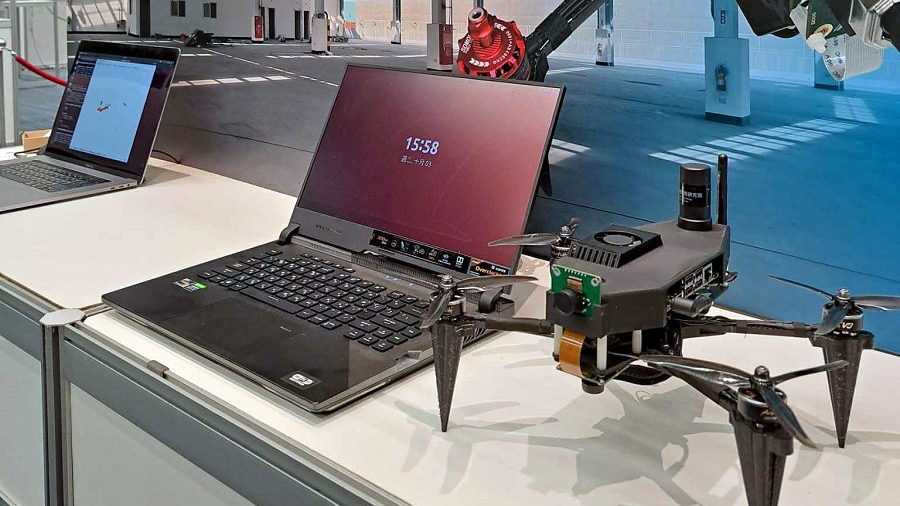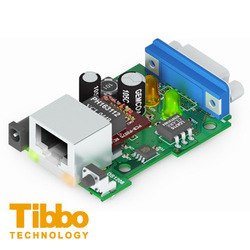Available models
The board is supplied in three modifications.
The DS1206N-RS is, essentially, a DS1206 device without a housing. The board has a proper RS232 port (RS232 transceiver IC and DB9M connector), as well as the power regulator ("12V"-to-3.3V). There is also a power switch that controls "12V" power output on pin 9 of the DB9M connector.
The DS1206N-TM is different from the "-RS" version in that it has a TTL serial port and no power switch. The port is accessible through a 12-pin connector on the PCB. The power regulator of the board can be used to supply 3.3V power to the attached serial device as well.
Finally, the DS1206N-TS is like the "-TM" version but has no "12V"-to-3.3V power regulator. Instead, an attached serial device is supposed to provide stabilized 3.3V power to the board.
|
Available models and their features
|
DS1206N-RS
(RS232)
|
DS1206N-TM
(TTL master)
|
DS1206N-TS
(TTL slave)
|
|
Setup button
|
YES
|
|
Status LEDs
|
YES
|
|
RS232 transceiver & DB9M connector
|
YES
|
NO
|
|
TTL interface connector
|
NO
|
YES
|
|
Power switch
|
YES
|
NO
|
|
Power jack and "12V"-to-3.3V regulator
|
YES
|
NO
|
Hardware features
| • |
Superior upgrade to the EM1202EV board. |
| • |
Based on a high-performance purpose-built 88-MHz T1000 ASIC. |
| • |
10/100BaseT auto-MDIX Ethernet port (automatic detection of "straight" and "cross" cables). |
| • |
Up to 3.5 serial channels: |
- DS1206N-RS: RS232 port (DB9M connector);
- DS1206N-TM and "-TS": TTL serial port (pin header);
- Baudrates of up to 921,600bps;
- None/even/odd/mark/space parity modes;
- 7/8 bits/character modes;
- Full-duplex mode with optional flow control;
- DS1206N-TM and "-TS": half-duplex mode with direction control;
- Flexible mapping with 15 different options, such as:
- A single channel: RX, TX, CTS, RTS, DSR, and DTR lines;
- 3.5 channels: RX, TX, RX2, TX2, RX3, TX3, and RX4 lines.
- DS1206N-RS: optional "12V" power output on DB9M connector (software-controllable);
- DS1206N-TM: optional "12V" power input from the serial port (instead of supplying power through the power jack).
| • |
512KB or 1024KB flash memory for firmware, application, and data storage. |
| • |
2KB EEPROM for data storage. |
- Green and red status LEDs on top of the device;
- Link and speed Ethernet status LEDs on the RJ45 jack.
| • |
Software-controlled onboard PLL to select the clock frequency of the device: 11.0592MHz with PLL off, 88.4736MHz with PLL on. |
- DS1206N-RS and "-TM": onboard regulator, 10-24V input range (12V nominal);
- DS1206N-TS: direct 3.3V input (must be regulated to +/- 5%).
| • |
Board dimensions: 52.6x38.0mm. |
| • |
Firmware and Tibbo BASIC application are upgradeable through the serial port or network. |
| • |
Tibbo BASIC application can be debugged through the network and no additional debugging hardware, such as in-circuit emulator, is required. |
| • |
Also available as a DS1206 (DS1206N board with housing). |
Programming features
| • |
Variable Types: Byte, char, integer (word), short, dword, long, real, string, plus ser-defined arrays and structures. |
| • |
Function Groups: Strings functions (21 in total!), date/time conversion functions, and hash calculation functions (md5 and sha1). |
- Sock — socket communications (up to 16 UDP, TCP, and HTTP sessions);
- Net — controls Ethernet port;
- Ser — in charge of serial channels;
- Io — handles I/O lines, ports, and interrupts;
- Fd — manages flash memory file system and direct sector access;
- Stor — provides access to the EEPROM;
- Romfile — facilitates access to resource files (fixed data);
- Pat — "plays" patterns on green and red status LEDs;
- Button — monitors the setup button;
- Sys — in charge of general device functionality. |
















